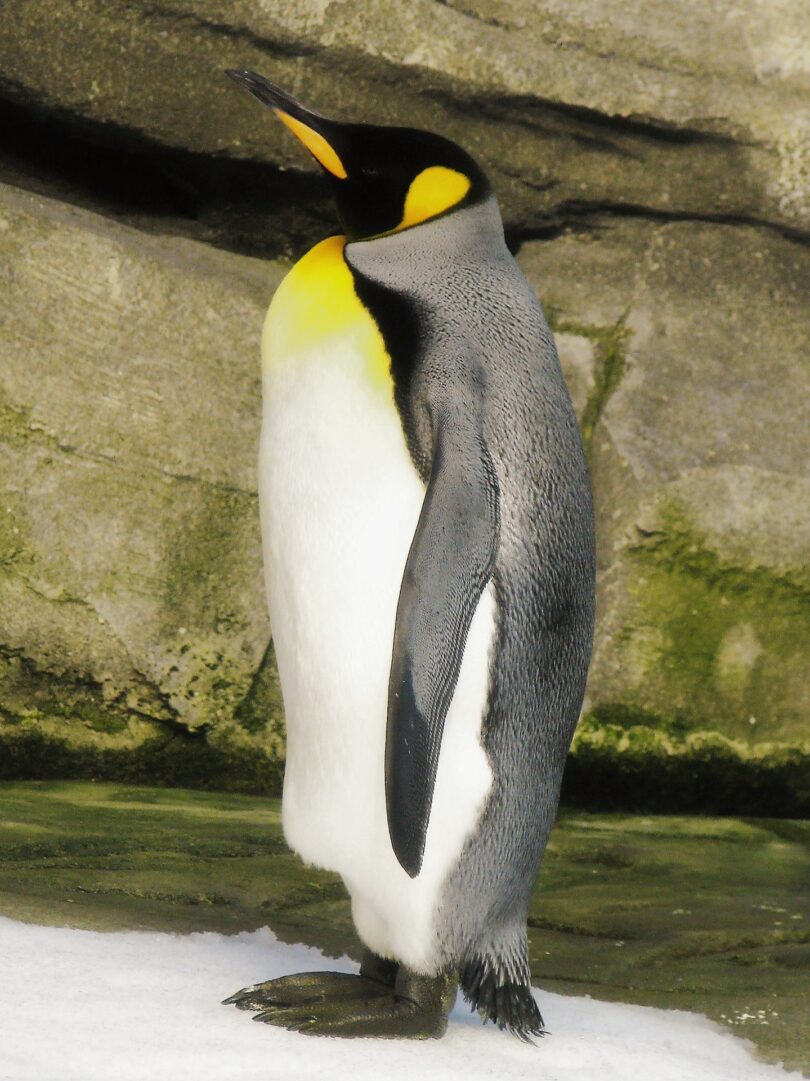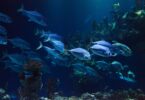introduction:
Penguins are some of the most distinctive and beloved birds on the planet. These flightless birds, primarily found in the Southern Hemisphere, are known for their striking black and white plumage, their charming waddles, and their extraordinary adaptations to some of the harshest environments on Earth. Despite their inability to fly, penguins are exceptional swimmers, making them fascinating subjects of study and admiration.
Physical Characteristics
Penguins possess a unique set of physical traits that differentiate them from other birds. Their bodies are streamlined for efficient swimming, with wings that have evolved into flippers, allowing them to propel through water with remarkable agility and speed. Penguins’ black and white coloration serves a crucial purpose: it provides camouflage while swimming. The black back blends with the dark ocean depths when viewed from above, while the white belly merges with the bright surface when seen from below, protecting it from predators.
Species Diversity and Distribution
There are 18 recognized species of penguins, each adapted to different environments ranging from the icy shores of Antarctica to the temperate islands of the Galapagos. The Emperor Penguin, the tallest and heaviest of the species, is famed for its remarkable breeding behavior during the Antarctic winter. In contrast, the Little Blue Penguin, the smallest species, inhabits the coastlines of Australia and New Zealand.
Adaptations to Cold
Penguins have evolved a range of adaptations to survive in extreme cold. Their feathers are densely packed and waterproof, providing insulation against frigid waters. Underneath their skin, a thick layer of blubber offers additional warmth. Penguins huddle together in large groups to conserve heat and shield themselves from icy winds, particularly during breeding seasons.
Breeding and Parenting
Penguin breeding behaviors are complex and fascinating. Many species are monogamous, at least for a breeding season, and both parents share the responsibilities of incubating eggs and feeding chicks. The Emperor Penguin’s breeding cycle is particularly notable; males incubate the single egg laid by the female, balancing it on their feet and covering it with a flap of abdominal skin, enduring months of fasting and freezing temperatures until the egg hatches.
Diet and Hunting
Penguins are carnivorous, primarily feeding on fish, squid, and krill. Their hunting techniques are highly efficient; they can dive to great depths and stay submerged for extended periods. Penguins rely on their keen eyesight to locate prey underwater. Their flippers enable swift and agile movements, allowing them to outmaneuver their prey and avoid predators.
Conservation Concerns
Despite their adaptability, many penguin species face significant threats from climate change, overfishing, and habitat destruction. The melting of polar ice affects the availability of breeding grounds and food sources. Overfishing depletes the penguins’ primary food stocks, forcing them to travel further and expend more energy to find sustenance. Conservation efforts are critical to preserving these iconic birds, focusing on habitat protection, sustainable fishing practices, and addressing the impacts of global warming.
Cultural and Ecological Significance
Penguins hold a special place in human culture, symbolizing resilience, endurance, and the beauty of wildlife. They are featured in literature, films, and even as mascots for various causes. Ecologically, penguins play a vital role in marine ecosystems, helping to maintain the balance of species populations.
Physical Characteristics:
Appearance: Penguins have a distinctive black and white plumage with a streamlined body adapted for swimming.
Size:
They vary in size from the small blue penguin, which stands around 40 cm tall, to the emperor penguin, which can be up to 120 cm tall.
Flippers:
Their wings have evolved into flippers, which they use for powerful and agile swimming.
Feet:
Penguins have webbed feet which aid in swimming and are also used for walking on land.
Behavior and Adaptations:
Swimming:
Penguins are excellent swimmers, with some species capable of reaching speeds of up to 15 km/h.
Diving:
They are also adept divers; the emperor penguin can dive to depths of over 500 meters and stay underwater for more than 20 minutes.
Thermoregulation:
They have a layer of blubber and densely packed feathers to keep them warm in cold water.
Counter-shading: Their black and white coloring provides camouflage while swimming—black on the back blends with the dark ocean depths, and white on the belly blends with the bright surface when seen from below.
Diet:
Primary Food:
Penguins primarily eat krill, fish, and squid.
Hunting:
They are skilled hunters, often working in groups to herd prey.
Reproduction:
Breeding:
Most penguin species are monogamous during the breeding season, with some forming long-term pair bonds.
Nesting:
Penguins lay eggs in nests made of stones, grass, or burrows, with both parents often sharing the responsibility of incubating the eggs and feeding the chicks.
Chick Rearing:
Penguins are attentive parents, feeding their chicks regurgitated food until they are old enough to fend for themselves.
Species and Habitat:
Species Diversity:
There are around 18 species of penguins, including the emperor penguin, king penguin, Adélie penguin, gentoo penguin, and the little blue penguin.
Habitat:
Penguins are primarily found in the Southern Hemisphere, with the largest populations in Antarctica, but they also inhabit temperate regions and the Galápagos Islands.
Conservation:
Threats:
Penguins face threats from climate change, overfishing, oil spills, and habitat destruction.
Conservation Efforts:
Many organizations are working to protect penguin habitats and mitigate the effects of climate change and human activities.
Penguins are fascinating birds with unique adaptations that allow them to thrive in some of the most challenging environments on Earth.
conclusion:
penguins are extraordinary birds that captivate our imagination with their unique adaptations and behaviors. Their survival in some of the world’s harshest environments is a testament to nature’s ingenuity. As we continue to learn about and from these remarkable creatures, it is imperative that we also take action to ensure their preservation for future generations to admire and study. Through concerted conservation efforts and a greater understanding of their ecological importance, we can help protect the future of these iconic birds.





